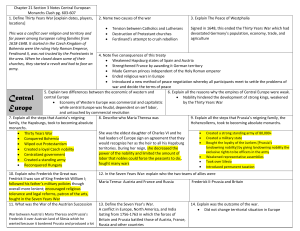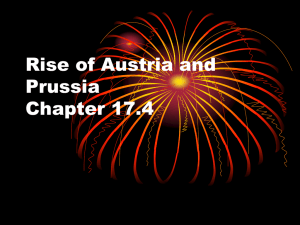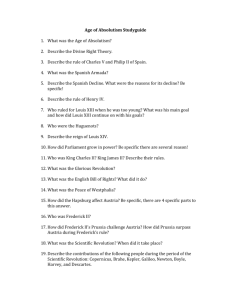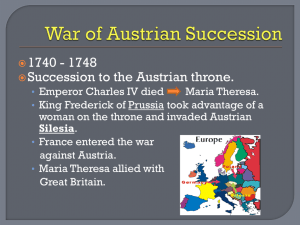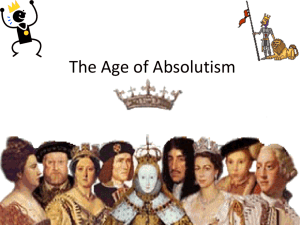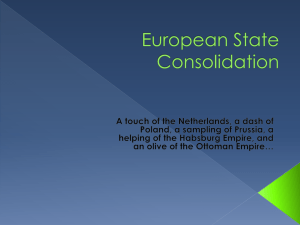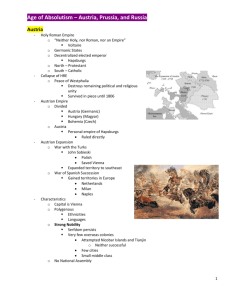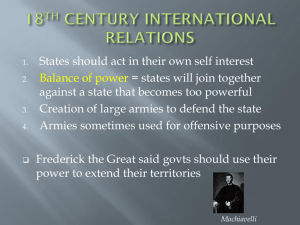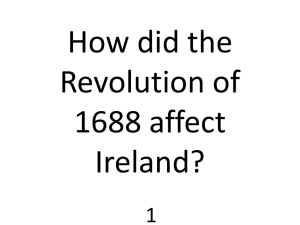Chapter 5 section 3
advertisement
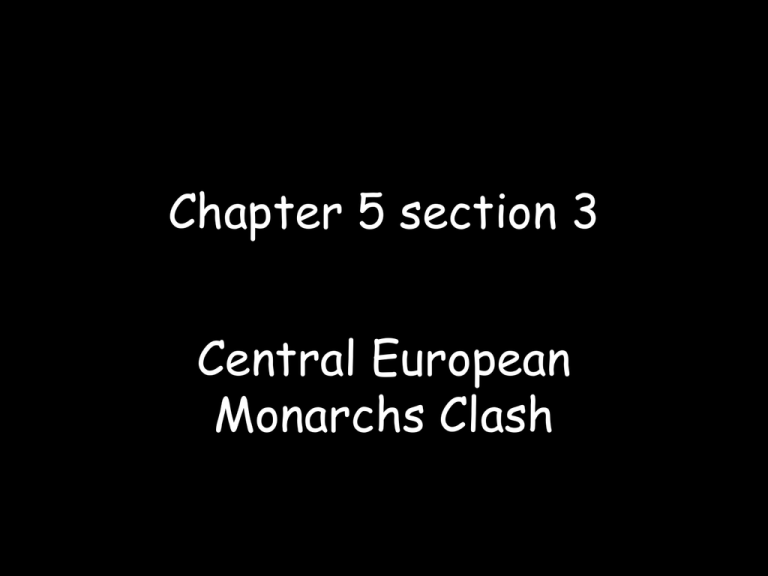
Chapter 5 section 3 Central European Monarchs Clash The Thirty Years' War • Germany had suffered from religious wars that ended in 1555 with the Peace of Augsburg. Rulers of each German state agreed that they would decide whether their lands would be Catholic or Protestant. • After the Peace of Augsburg (1555) the catholic and Lutheran princes kept a close eye on one another. • Relations between sides became tense over the next decades. Then in 1618, a new war broke out and lasted for 30 terrible years. It was called the Thirty Years' War. • Both Lutherans and Catholics felt threatened by Calvinists. Lutherans formed the Protestant Union, and Catholics started the Catholic League. In 1618, Ferdinand II, head of the Hapsburg family, and a Catholic, decided to close some Protestant churches in Bohemia. This made the Protestants mad, and they revolted • Ferdinand sent an army to crush the revolt. As a result, the Thirty Years’ War began. It lasted for thirty years • The Hapsburgs started good, and were whipping the Protestants Every time the army won Ferdinand allowed them to plunder. • But the Protestants, led by Gustavas Adolphus of Sweden, turned the tide and drove the Hapsburgs out of Northern Germany Cardinals Richelieu and Mazarin of France had begun the war on the side of the Hapsburgs, but then decided that they didn’t want the Hapsburgs to have too much power. So even though they were Catholic, they switched teams and joined the Netherlands and German Protestant states. • The Thirty Years' War ended in 1648 with the Peace of Westphalia. It had been a disaster for Germany. About 4 million people had died, and the economy was in ruins. It took Germany two centuries to recover. • The peace treaty weakened the power of Austria and Spain. But it made France stronger. The French gained German territory. The treaty also made German princes independent of the Holy Roman emperor. http://www.youtube.com/watch?v=c-WO73Dh7rY&safety_mode=true&persist_safety_mode=1 • It ended religious wars in Europe. Lastly, the treaty introduced a new way of negotiating peace-a method still used today. All states involved in the fighting meet to settle the problems of a war and decide the terms of peace. • With the Treaty of Westphalia also came the end of the idea of a Catholic Empire that would rule most of Europe. Thus, the modern state system was born. Each independent state was now equal to any other. Central Europe Differs from the West • In 1711, Charles VI became the Hapsburg ruler. It was difficult for him to rule, however, because there was a diverse assortment of lands within the borders of his empire. • His heir, Maria Theresa, had a difficult time as ruler. She was constantly at war with Prussia, and she had to keep the territories within her empire under her reign. • Maria had 16 children. Most famous child was Marie Antoinette, who married Louis XVI of France. She was very religious. She did not like to see the poor work to hard. Prussia and Austria Clash (pages 149-1501 What was Prussia? • Like Austria, Prussia rose to power in the late 1600s. Like the Hapsburgs of Austria, Prussia's ruling family, the Hohenzollerns, also had ambitions. • The Hohenzollerns began to build their state from the German states of Brandenburg and Prussia. • In 1640, a 20 year old Hohenzollern named Frederick William inherited the title of elector of Brandenburg. • He decided it would be wise to build a strong army after seeing the destruction of the Thirty Years’ War. The Hohenzollerns of Prussia • Frederick, who later became know as the Great Elector, built the best army in Europe. It had 80,000 men. The army was paid from the collection of taxes. The Hohenzollerns of Prussia • Frederick also brought the nobles under his cooperation by making them the officers in his army. • The nobles in Prussia were called Junkers • Frederick was afraid that his son would not be a good ruler. Frederick II was more into poetry, music, and philosophy. In 1730, Frederick II and a friend tried to run away. They were caught. As punishment, his father ordered him to watch his friend be beheaded. • Frederick II went on take over the throne. He believed the role of government was to expand it’s territories. He allowed religious toleration in Prussia. • Prussia was a strong state that gave much power to its large, welltrained army. In 1740, Frederick the Great of Prussia invaded one of Maria Theresa's lands. Austria fought hard to keep the territory, but lost. Still, in fighting the War of the Austrian Succession, Maria Theresa managed to keep the rest of her empire intact. The Seven Years’ War • After losing Silesia, Maria decided to switch allies and joined with the French, and then allied with the Russians. Frederick found out and joined with England. • Then, he attacked Saxony, an ally of Austria. Soon, just about every European power was involved in the war. • This would become the 7 Years War. It was fought in Europe, India, and North America. The war lasted from 1756 to 1763. • The two sides fought again, beginning in 1756. In the Seven Years' War, Austria abandoned Britain, its old ally, for France and Russia. Prussia joined with Britain. The Prussians and British won. In that victory, Britain gained complete control of the overseas colonies of France.
